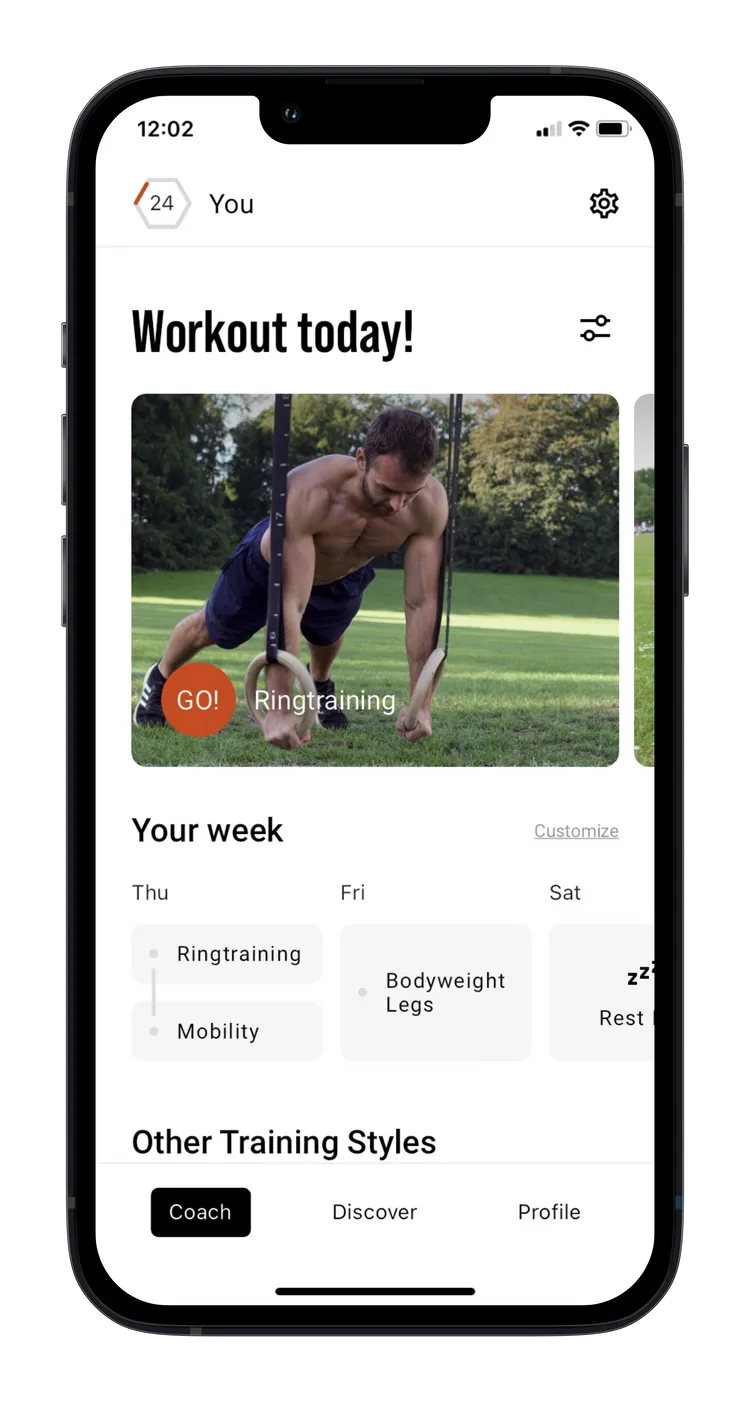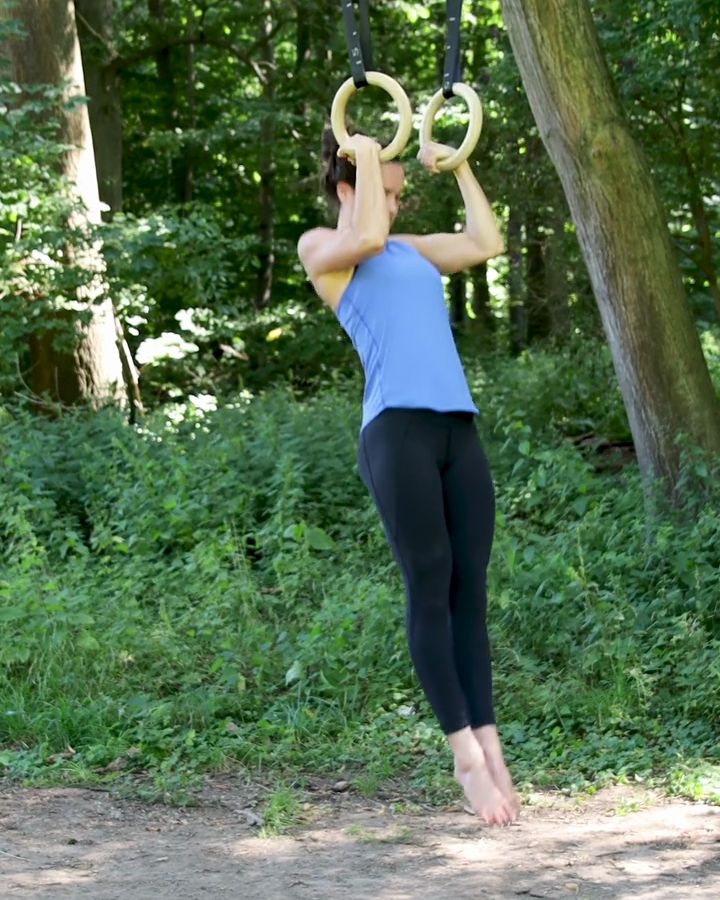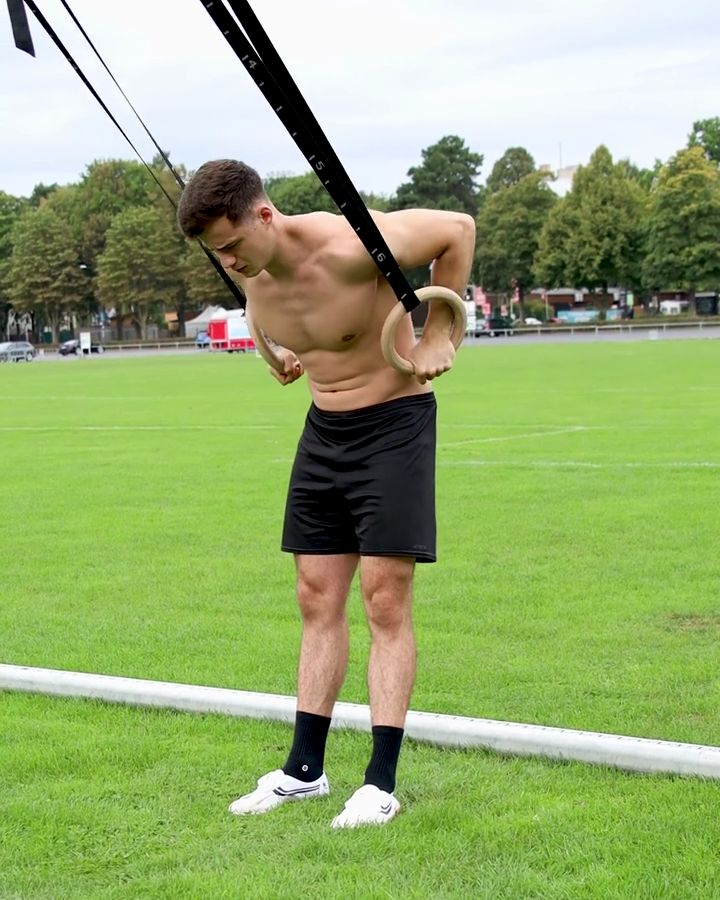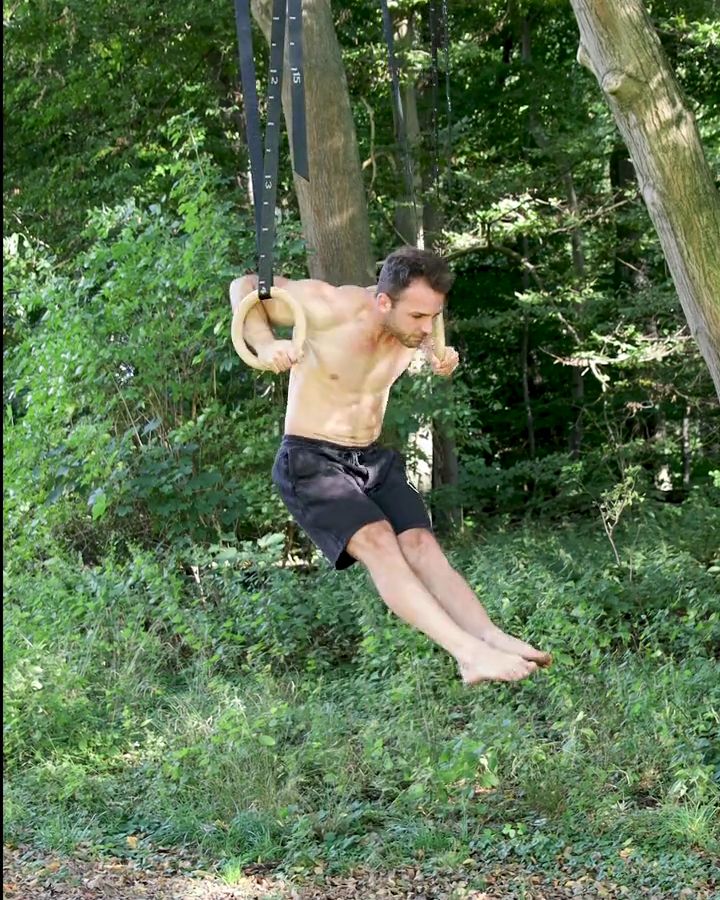False Grip Row with gym rings
The False Grip Row is very similar to classic rowing on the gymnastic rings, with the difference that the False Grip is used. The False Grip, where the palms extend over the rings, is a technique that is important for exercises like the Ring Muscle Up, as it positions the hands correctly to make the transition to the dip position easier. The grip can initially feel difficult and painful because it puts significant strain on the muscles and skin of the wrist. To train the False Grip, one should start slowly and gradually increase intensity, allowing the skin and muscles to adapt. Accessories like grip tape or chalk can also help improve grip.
Necessary equipment
False Grip Row with gym rings - the correct execution
- Grip the rings in the False Grip position
- Start in a low rowing position
- Stretch arms as far as possible
- Pull the rings to your chest
- Check your grip after each repetition
- Regrip the False Grip if necessary
- Walk backwards to simplify the exercise
The exercise False Grip Row is intended to be used as a technique exercise.
Which muscles are trained by False Grip Row?








Primary trained muscles for False Grip Row
Forearm - The forearm muscles are divided into flexors and extensors. The flexors bend your wrist, while the extensors straighten it.
Latissimus - The latissimus dorsi is a large muscle in your back that helps you pull your arm down and back. It also supports breathing and stabilizes the spine.
Secondary trained muscles for False Grip Row
Upper Back - The muscles in the upper back, including the trapezius and rhomboid muscles, help move and stabilize your shoulders. They pull the shoulder blades together and support posture.
Alternative variants of False Grip Row with gym rings:
High False Grip Row
In elevated False Grip rowing, the body is positioned more upright, reducing the strain on the arms and shoulders. This variation is especially suitable for beginners to stabilize the False Grip and improve control during the pulling motion before increasing the intensity.
Necessary equipment
High False Grip Row - the correct execution
- Hold the rings with the False Grip
- Range the arms as far as possible
- Check your handle after every repetition
- If necessary, grab the false grip
- Run to the rear to simplify the exercise
False Grip Pull Ups with gym rings
False Grip Pull Ups require greater pulling strength compared to False Grip Rows, as the entire body weight must be lifted. They build on the rowing motion and specifically strengthen the transition to the final position of the Ring Muscle Up by training the False Grip under higher loads. A prerequisite for a False Grip Pull Up is mastering the False Grip Hang confidently.
Necessary equipment
False Grip Pull Ups with gym rings - the correct execution
- Grap the rings with a false grip, where your wrists rest on the rings
- Start in a hanging position with your arms straight
- Powerfully pull the rings to your chest, leading your elbows downwards and close to your body
- Ensure that you maintain the false grip throughout the entire movement
- After each repetition, check and adjust your false grip if necessary to ensure optimal hand positioning
- Lower your body slowly and controlled back to the hanging starting position
- Focus on executing the movement cleanly and smoothly
False Grip Row with Transition
This exercise combines the classic rowing motion with the transition of the Ring Muscle Up, maintaining the False Grip throughout the entire movement. It serves as a direct progression to improve the smooth transition from the pulling to the pressing phase in the Muscle-Up.
Necessary equipment
False Grip Row with Transition - the correct execution
- Grip the rings in a false grip, ensuring a stable hold
- Fully extend your arms to take the starting position
- Pull yourself into the starting position of the dip, ensuring the rings stay close to your body for control during the transition
- Transition back into the rowing position slowly and in a controlled manner
- Check your grip after each repetition and adjust the false grip as needed
- Step backward to simplify the exercise if necessary
This could also be interesting
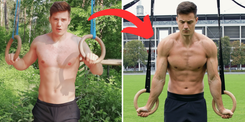
Calisthenics Body Transformation – How to Build a Strong, Lean, and Athletic Physique
Transform your body with Calisthenics! Build muscle, burn fat & achieve a shredded physique with bodyweight training. See real before & after results!

The Best Fitness Apps in 2025: Our Top 10 Recommendations
Don’t miss the best fitness apps of 2025: surprising favorites, free options, and perfect tools for your workouts. Find the ideal app today!
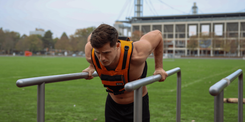
Complete Calisthenics Skills List – 40+ Exercises from Beginner to Pro
Which calisthenics skills should you learn first? And which ones will really help you progress? In this article, you’ll find a complete list of over 40 exercises – from the very basics to the toughest moves for professionals. Each exercise comes with instructions, so you can immediately integrate them into your training.
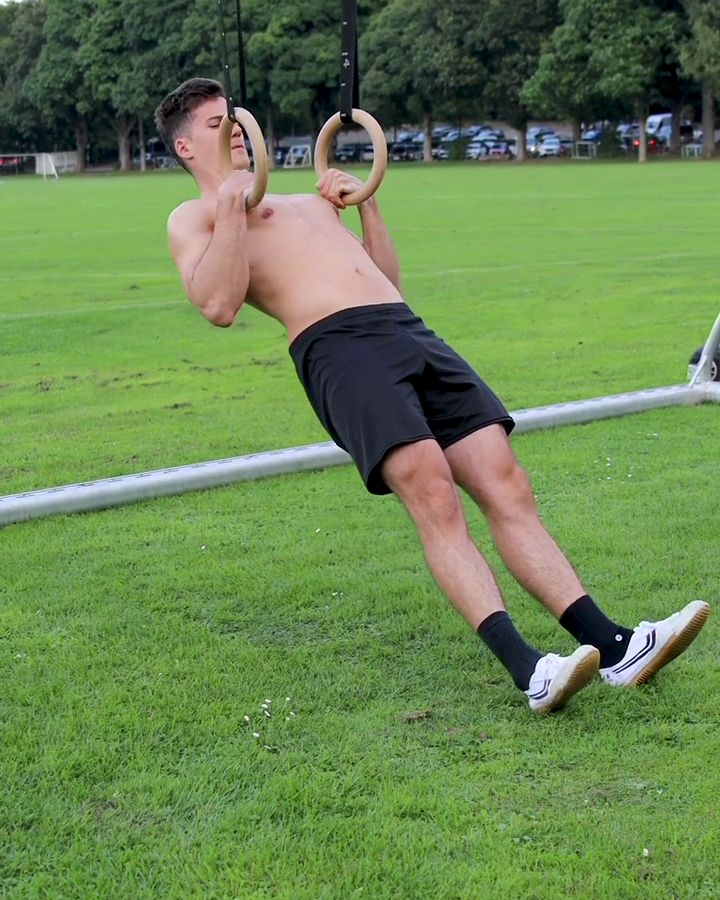
~e5724973d14549c23ea8a586b5736b36.png?alt=media)
